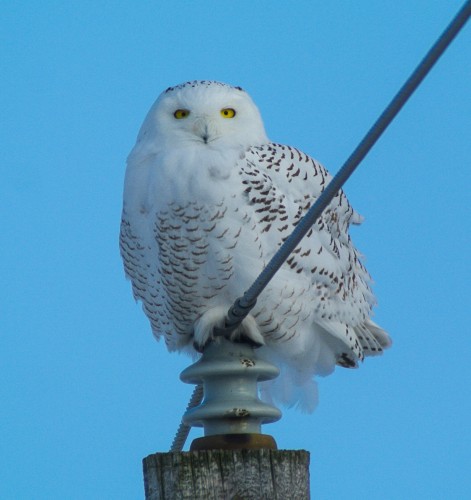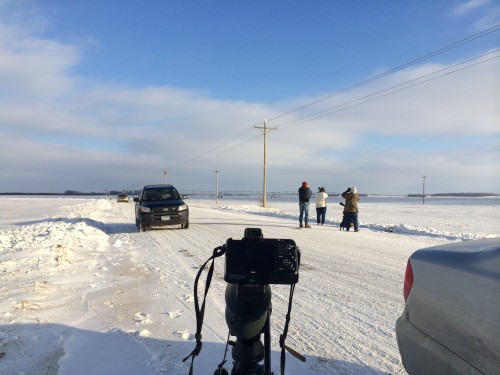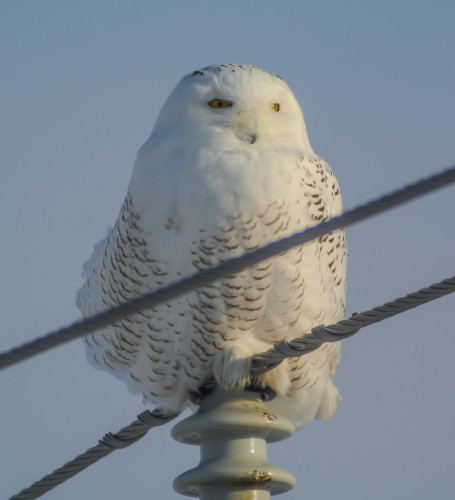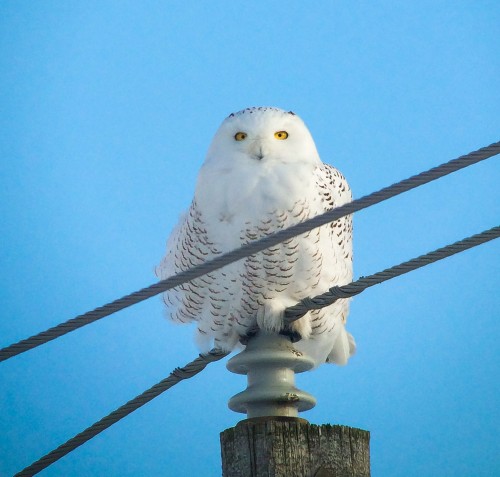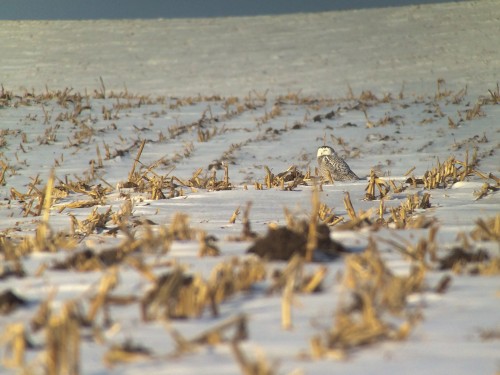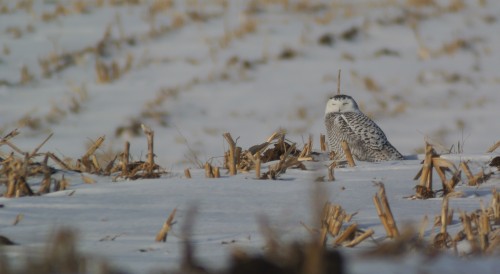Hey! Have you checked out Project Snowstorm or contributed to it? You should donate because your money allows researchers to study an owl irruption in a way we've never been able to before--in real time rather than spending the next two years trying to figure out what happened, why it happened and if the owls survived. I gave $25, can you do the same? How about $10 or more? But if you can't donate, check out what they are learning...like maybe these owls aren't all starving to death and that some are even hunting ducks over open water at night! Amazeballs!
If you live in the eastern half of North America...it's kind of your duty to post about snowy owls this winter. So many people are finding them and so many non and casual birders are seeing them, it's reminding me of the great gray owl irruption of 2004/2005...which means my blog will be 10 years old in September of this year. Wow. How did ten years happen that fast? So many adventures and changes. And I wonder who is the next "Birdchick" that is out there with a fire in her belly with a ton of bird stuff to share. She (or he for that matter) doesn't have to be "Birdchick" but I do wonder who is like I was 10 years ago seeing how people share birding information and thinking, "I could do this in a completely different way (and maybe even a better way)," and will soon get their message out there for the delight or chagrin of the world? For every movement there is an anti movement or as we like to say at Chez Stiteler, "For every Mame is an Auntie Mame." And I'm totally cool with being the Mame in this situation and gladly await the Auntie Mame.
But back to snowy owls! They are all over the frickin' place. They are within a 30 minute drive of my apartment to the northwest and to the southeast. All one really needs to do is either use eBird or the BirdsEye app on their phone to see where people are seeing them.
Based on eBird and Facebook (and the many photos people are posting on that social media site) there is currently a fairly reliable snowy owl on 180th street and Hogan in Dakota County, Minnesota. I headed down after doing some work on Winter Trails Day to test out a new digiscoping adapter on my iPhone 5s (can't talk about the particulars yet). It was far easier finding the owls than I thought, I just drove around to the known spots and pulled over where ever I saw cars on the sides of the farm roads. The above bird has been perching here regularly no matter how close people get to it. I alas, cannot get close to a snowy because my scope and camera set up have too much zoom! From that particular setting here is what I got with the Nikon V1 and my Swarovski scope:
I could barely get the whole bird in the frame! With the Nikon V1, you get great photos but it really zooms in. I've noticed before that it's field of view is quite narrow. When a bird is close like this, I find my iPhone 5s works much better for digiscoping. Here's the same bird in the same spot but with my iPhone:
Better field of view.
Here's another comparison with a different snowy owl that was further out in a corn field:
This was taken through my scope with the iPhone 5s with a bird that was about 100 yards out from the road. I do like getting habitat shots of these snowy owls. It's fun to try and figure out where they are hiding. I'm to the point now that I look for a dirty wedge of snow and that helps me find the females.
Same bird taken at the same distance with the Nikon v1 through my spotting scope.
Oh and if you are interested in attempting to sex the snowy owls in your area, Cornell has a good page explaining it. Based on what they show, the bird on the post with the thinner barring and larger white chin patch is a male and the above bird with the thick barring is female.
Here is a short video I made showing the difference between my iPhone and my Nikon V1 of digiscoping the male snowy owl. You can see that with either set up, you really don't need to be close to the owl and all up in its business.
[youtube]https://www.youtube.com/watch?v=8-XUhNQlSRg[/youtube]

